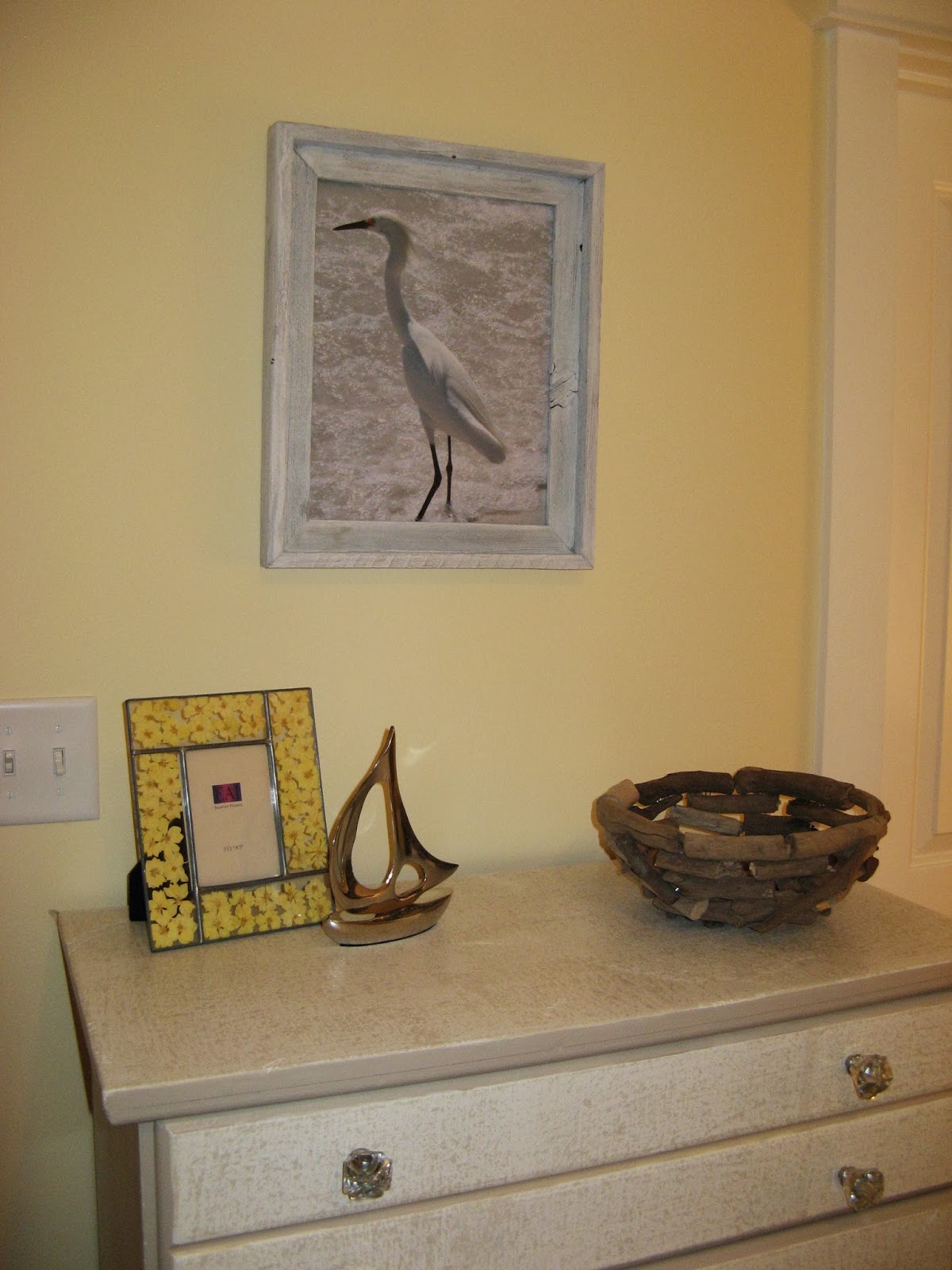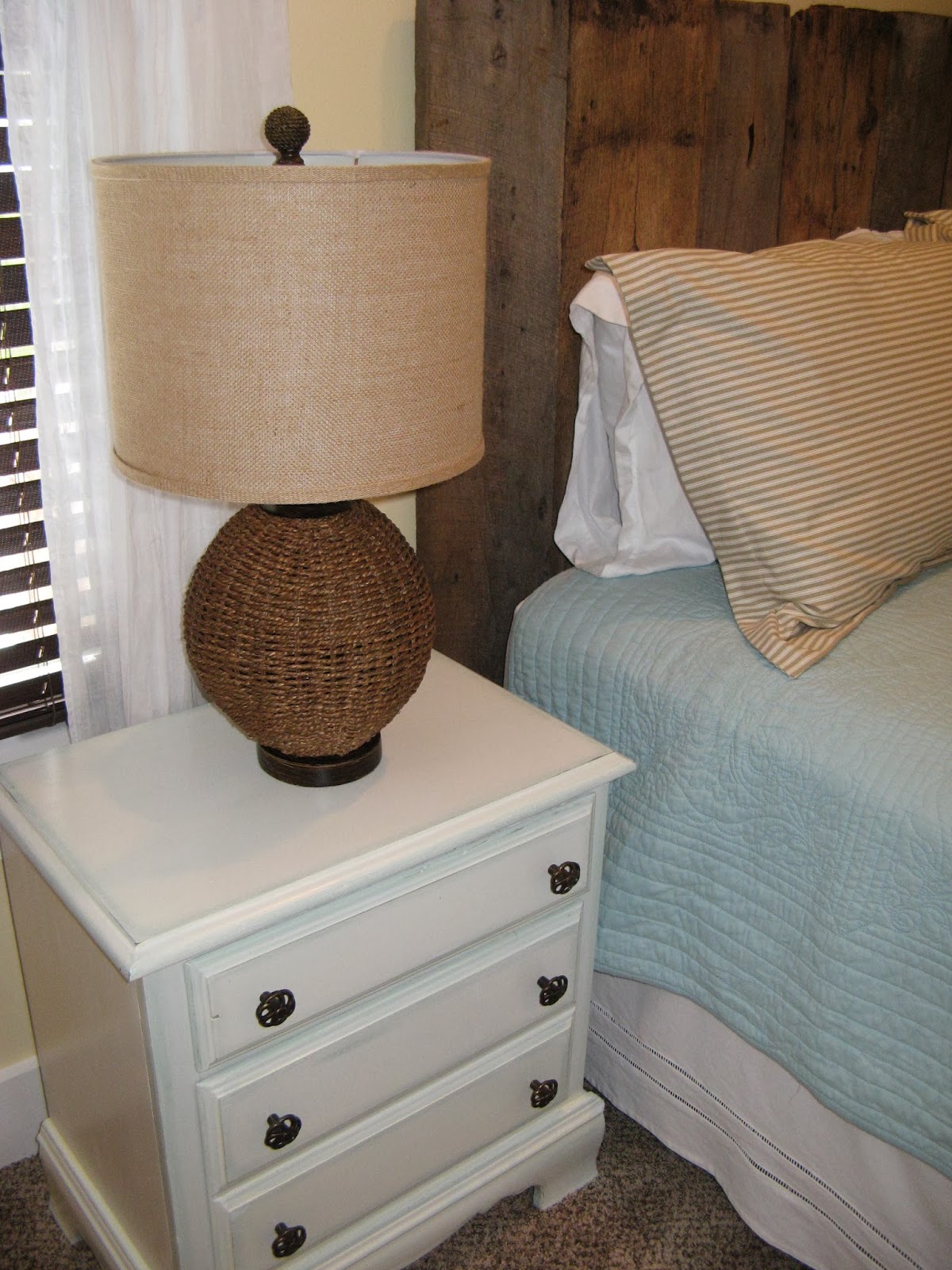This barn wood coffee table is one of the coolest projects we took on for our beach cottage. It all started with a post on Craig's List for barn wood, and surprisingly my husband said "Let's go!". The wood was from an old barn in Alabama. We picked out enough boards to create two headboards, a coffee table and a couple extra pieces for some random fun projects.
 |
| Barnwood in our garage |
The project for the headboards seemed relatively easy as we didn't plan to do too much to the wood before putting them together. The coffee table was a different story. We needed to plane the pieces down to get the finish we wanted for a table. Not to mention, put them together somehow to make a tabletop.
Fortunately, my husband has a close friend into woodworking. They spent an afternoon planing the wood and constructing the table top. Here are some of the cool things they did - they picked out boards that were different types of wood - all with their own unique character. They intentionally left some of the bark exposed on one of the pieces. Also, they wanted to put the table together in a traditional way - as our friend said - "using a biscuit joiner would be a crime on this old barn wood", so they opted to go with tongue and groove (a more old-school approach). The sides of the barn wood were grooved and thin pieces of cherry wood were cut hold the whole thing together. The piece of cherry wood used here was picked up on their Appalachian Trail hike earlier that year - how neat is that?! The table top turned out beautiful!
As a tribute to my husband Tom and his friend Ryan who put the tabletop together, I added this engraving on the bottom with my Dremel...
 |
| Engraving on Underside of Table |
In hindsight - the process would have been easier if we had purchased a pre-made table base and created a table top to fit the base (as opposed to having a custom base made to fit whatever size they made). However, I would have missed the experience of going to a metal shop, and finishing off a raw steel base myself. I got a recommendation on a local metal shop from a contractor I had worked with. I brought a couple photos with me, and a very nice lady helped me through the process.
Here is what I learned
- They could make the table base for us out of pieces of raw steel welded together.
- The pieces of steel come covered in a thick coat of black grease (to keep it from oxidizing).
- Once the base was finished it would be passed on to me and I would have to degrease it with a degreasing product, and then determine how to finish it off.
- An option for finishing would be to leave the whole thing outside for awhile to rust (but my husband liked the idea of it being shinier - not rusted).
- Once we got the finish we wanted we would have to seal it to stop the oxidation process (a spray polyurethane would be fine).
Below are the specifications we created for the table base. The light blue shows the steel frame. The royal blue squares with the circles, represent L-brackets with holes for screws. These would be welded to the frame; the purpose being to provide a means of attaching the wood table top to the metal base. I provided specific measurements for placement (in orange) to center the screws on each plank of wood.
 |
| Table Specifications |
After providing spec's for the design, in a short while the table base was done and I picked it up. They were nice enough to remove some the grease for me, but there was still work to do. The welded areas were very shiny steel where they had used a grinder to smooth over the seems. I mistakenly assumed that after I used the degreaser - the whole piece would look very shiny like this - not so.
After degreasing, most of the steel was a dull gray color. Now what was I supposed to do?! I had an orbital sander, but sandpaper wasn't going to work on steel. I didn't own a grinder. Ultimately a trip to Lowe's provided a metal brush attachment for our drill and I just kept going over and over the entire table until I got the final look (Note - you need a drill that plugs into a wall outlet - the battery powered drills run out too quickly and don't have enough power). Lastly, I sprayed it with satin spray polyurethane. The whole process of degreasing to the final finish took about 12 hours. I was exhausted.
 |
| Wire brush attachment for drill |
 |
| Brushed texture on steel base |
With the base of the table ready to go - it was now time to finish the table top. Before attaching the table top to the base, I sanded the tabletop down with several passes of sandpaper until I got to a very fine grit. I also applied five coats of satin polyurethane. Yes - I said five coats - I know how we use coffee tables in this household, and I even considered doing more coats than five.
Here are some posts showing the other items we made out of barn wood...
For more beach cottage posts see my Beach Cottage page.












































